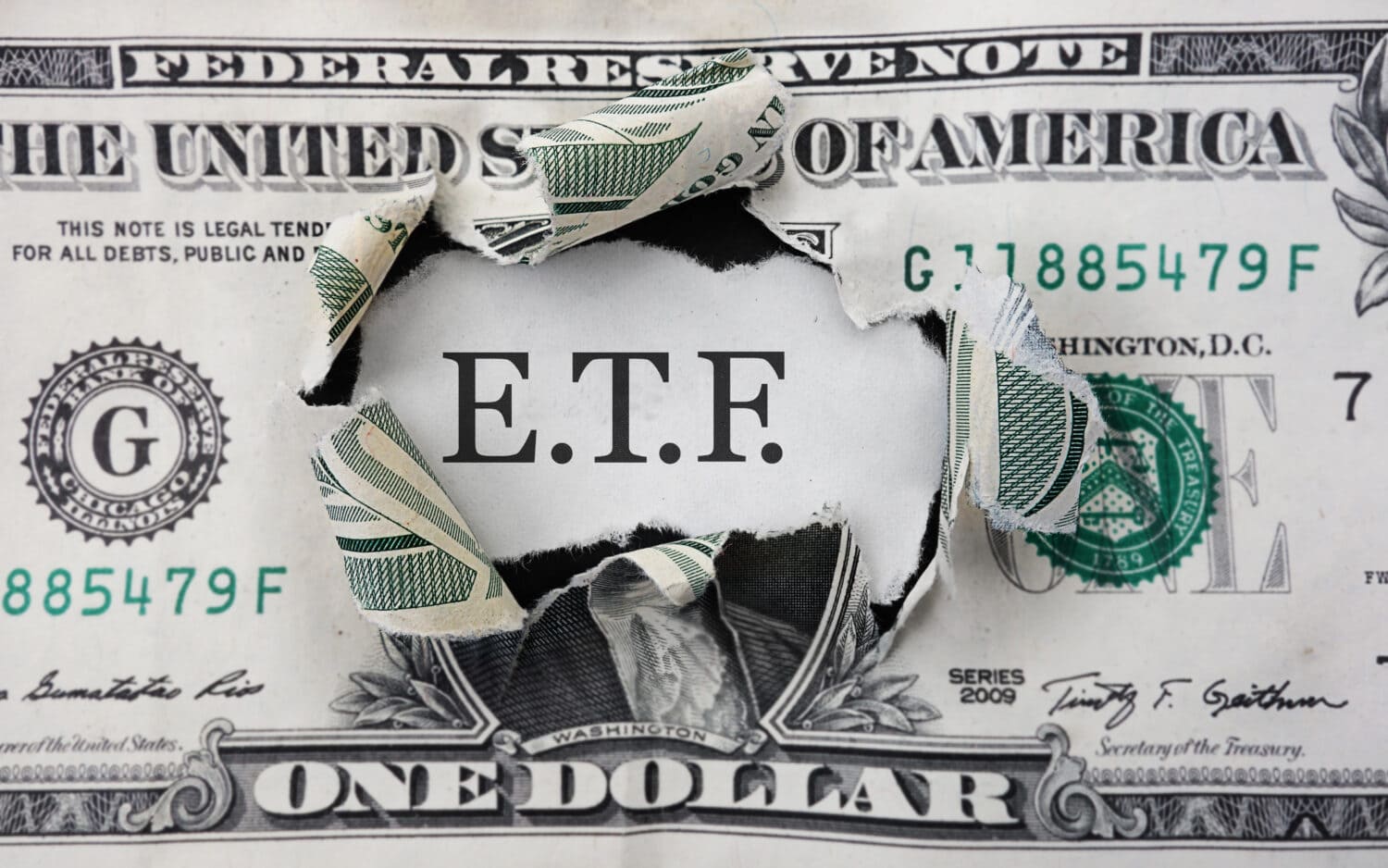

ETFs are a great way for investors to get instant diversification at a low cost. But with so many ETFs available, choosing the right one for your investment goals can be daunting. In this article, we’ll look specifically at two ETFs offered by Vanguard: VOO and VOOG.
While VOO offers broad exposure to the entire U.S. stock market, VOOG takes a more targeted approach by focusing on growth-oriented companies. One isn’t necessarily better than the other. It depends on your risk tolerance and investment timeframe.
We’ll take a closer look at the details of these two ETFs below, specifically focusing on helping you choose between them.
What is VOO?

The Vanguard S&P 500 ETF (NYSE: VOO) tracks the performance of the S&P 500 index. This index represents the 500 largest publicly traded companies in the United States based on market capitalization. When you purchase VOO, you’re essentially purchasing a very small amount of all these companies.
Because VOO holds companies across many industries, it’s very diversified. It’s largely considered a safe investment, as any one company’s impact on the overall ETF is very small. It also has a very low expense ratio, which translates to more money in your pocket (and fewer lost to fees).
VOO is a convenient, cost-effective way to invest in a large swath of the U.S. stock market.
What is VOOG?

The Vanguard S&P 500 Growth Index Fund ETF (NYSE: VOOG) focuses exclusively on growth stocks. It doesn’t focus on the whole S&P Index like VOO. Instead, it invests in large, established companies with high growth potential. Typically, these companies are tech-related or in disruptive industries. For one reason or another, Vanguard expects them to perform very well.
The defining feature of VOOG is growth. This ETF’s goal is to provide investors with as much capital appreciation as possible by focusing on companies with the potential for a significant stock price increase.
It’s important to remember that with a focus on growth, VOOG also carries potentially higher risk. It is more volatile than the overall market, meaning the price moves more. When the price moves up, this is great! When it moves down, not so much.
VOO vs VOOG: What Fund is Right for You?

Fees
All ETFs have fees that fund their management. Compared to many actively managed funds, both VOO and VOOG offer low expense ratios. Their fees are typically very similar. (Right now, they are both at 0.03%.)
Therefore, you’ll be happy to know that you’re getting a good deal no matter which of these you choose. However, the response ratio doesn’t differ enough for it to make a huge difference when picking between them.
Risk
The more critical consideration here is the risk. Risk is hard to measure (and largely subjective). However, a common way to measure it on the stock market is through Beta.
Beta measures how volatile an ETF (or stock) is compared to the market as a whole. The market always has a Beta of 1, and every investment is rated based on this. When the Beta is more than 1, it suggests a higher volatility. When the Beta is less than 1, it is less volatile.
VOO tends to have a BETA close to 1, as it’s looking to mirror the overall market. On the other hand, VOOG’s focus on growth stocks can lead to a Beta quite a bit higher than 1. It experiences far larger price fluctuations.
Currently, VOO has a Beta of 1.0, while VOOG has a Beta of 1.12.
There is a trade-off here, though. VOO isn’t going to make any huge gains, but VOOG may. Conversely, this also means it will lose more in large market downturns, so it’s best for those with a longer investing timeline.
You want plenty of time to ride out potential downturns with VOOG, while VOO is more stable and suitable for short-term investors.
Historical Performance
While historic performance isn’t everything, it can provide insight into how two ETFs are expected to act in the long term.
Historically, VOOG has often delivered higher returns than VOO, particularly during bull markets when growth stocks tend to outperform the broader market. This ETF simply focuses on companies with a higher growth potential, leading to higher profit.
However, VOOG’s potential fo higher returns comes at a cost of lower dips, too. Growth stocks can be very susceptible to market downturns, especially those in the tech sector. Therefore, you should expect higher loses with VOOG, though it tends to make these up over the long term.
VOO’s diversified nature offers more stability.
There’s no clear winner in historical performance. It depends on the specific time period you analyze. Bull markets may favor VOOG, while bear markets might see VOO perform better due to its lower volatility.
The key takeaway is to consider your investment horizon. If you have a long-term investment timeframe and are comfortable with potentially higher volatility, VOOG’s historical potential for higher returns might be appealing. However, VOO’s more moderate historical returns might be a better fit if you prioritize stability and lower risk.
Top Holdings
VOO and VOOG hold many of the same companies, but there are several key differences.
VOO tracks the S&P 500, meaning it will adjust its stocks depending on the companies in the index. When a stock leaves or enters the index, VOO changes accordingly. You’ll find a mix of large, established companies from many different sectors, like:
- Microsoft Corporation (NASDAQ: MSFT)
- Apple Inc. (NASDAQ: AAPL)
- NVIDIA Corporation (NASDAQ: NVDA)
- Amazon.com, Inc. (NASDAQ: AMZN)
- Meta Platforms, Inc. (NASDAQ: META)
- Alphabet Inc. (NASDAQ: GOOGL)
- Alphabet Inc. (NASDAQ: GOOG)
- Berkshire Hathaway Inc. (NYSE: BRK-B)
- Eli Lilly and Company (NYSE: LLY)
- JPMorgan Chase & Co (NYSE: JPM)
VOOG, on the other hand, focuses on companies with high growth potential. These holdings also change regularly, and they tend to be pretty tech-oriented:
- Microsoft Corporation
- Apple Inc.
- NVIDIA Corporation
- Amazon.com, Inc.
- Meta Platforms, Inc.
- Alphabet Inc.
- Alphabet Inc.
- Eli Lilly and Company
- Broadcom Inc (NASDAQ: AVGO)
- Tesla, Inc. (NASDAQ: TSLA)
VOOG also tends to put more weight on the companies at the top. Its top ten holdings make up over 60% of its total assets. On the other hand, VOO’s top ten holdings are around 34% of its total holdings. VOOG is putting more weight on few stocks, which can come with added risk.
Top Consideration: Your Investment Time Horizon

So, what does all of this mean? When choosing between these two ETFs, your primary consideration should be your investment time horizon. In other words, how long do you plan to hold the stock?
If you have a very long-term investment horizon, VOOG may be the better option. It tends to provide better returns in the long term. If you can hold through dips, it’s likely to perform better than VOO.
However, if you need your money back sooner rather than later, we recommend choosing the stability of VOO. Its steady nature will provide less dramatic gains while lowering the risk of a huge dip when you need to pull out.
For instance, let’s say you’re investing for retirement. When you’re younger, investing in VOOG makes complete sense. You won’t need to cash out for decades. However, as you approach retirement, you should transfer your money over to VOO to preserve your wealth.
Choosing Between VOOG and VOO

There are two individual factors you should consider when selecting between VOOG and VOO: your risk tolerance and investing timeline.
VOO offers broad diversification and a lower risk profile because of this. It provides more stability by mirroring the overall market very closely. Conversely, VOOG is focused on companies that have a high potential for growth. While this approach does lead to higher gains over time, it’s also very risky.
If you cannot tolerate risk, VOOG is not for you. If you need your money sooner than five years, VOOG isn’t for you. If you plan to buy and hold for decades, you may want to consider VOOG. Otherwise, VOO is a fabulous option.
VUG is another ETF that’s a growth-alternative to VOO. You can read about how it compares in our VUG vs. VOO comparison.
Take This Retirement Quiz To Get Matched With An Advisor Now (Sponsored)
Are you ready for retirement? Planning for retirement can be overwhelming, that’s why it could be a good idea to speak to a fiduciary financial advisor about your goals today.
Start by taking this retirement quiz right here from SmartAsset that will match you with up to 3 financial advisors that serve your area and beyond in 5 minutes. Smart Asset is now matching over 50,000 people a month.
Click here now to get started.
Thank you for reading! Have some feedback for us?
Contact the 24/7 Wall St. editorial team.



